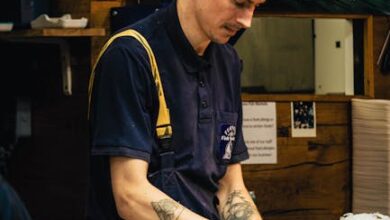The Allure of the Anthropomorphic: Why Humanoids Fascinate Us

Go ahead, admit it. You’ve scrolled through those captivating viral videos: humanoid robots gracefully unpacking groceries, meticulously stocking fridges, or even folding laundry with uncanny precision. It’s an intoxicating vision, isn’t it? A world where drudgery is a relic of the past, replaced by an army of metallic helpers making our lives infinitely easier. The narrative is electrifying, promising a revolution not just in our homes, but across entire labor markets, with robots poised to take over monotonous factory lines. It’s a compelling future, painted in bold, optimistic strokes.
But what if I told you that, for now, much of that glossy vision is, well, just that — a vision? A fantasy, perhaps, when measured against the often-hilarious, sometimes cringe-worthy reality of current AI robot performance. The gap between promise and practical application feels less like a minor inconvenience and more like a gaping chasm. We’re witnessing an industry racing ahead with ambition, sometimes leaving the nitty-gritty of engineering and robust software struggling to keep pace.
The Allure of the Anthropomorphic: Why Humanoids Fascinate Us
The appeal of humanoid robots is deeply rooted in our own self-perception. They mimic our form and function, designed to interact with a world built for humans. This inherent familiarity makes the idea of a robotic assistant incredibly enticing. Imagine delegating repetitive, tedious, or downright boring tasks to a tireless, ever-ready machine. That’s the dream. From factory floors to elder care, the potential applications seem limitless.
Companies like Tesla, with their Optimus bot, have captivated imaginations. Unveiled in 2021 and reimagined by 2025, Optimus is envisioned as a factory assistant capable of walking, sorting objects, and integrating seamlessly with Tesla’s AI vision systems for autonomous navigation. Elon Musk’s grand ambition is an “army” of these robots working in unison on production lines, a potential game-changer for industries hungry for greater automation and efficiency.
Beyond factories, the vision stretches further. Boston Dynamics’ Atlas robot, famed for its breathtaking acrobatic moves, hints at potential uses in challenging terrain, perhaps for military or disaster relief operations. Meanwhile, Figure AI and China’s Unitree are actively developing robots designed for elder care assistance and warehouse stocking – roles that could genuinely alleviate human burdens.
The World Economic Forum itself has weighed in, envisioning humanoids as everyday fixtures within the next decade. While this might displace an estimated 85 million jobs worldwide, it also foresees the creation of new roles focused on robot oversight, maintenance, and development. The economic ripples, both disruptive and creative, are anticipated to be immense. The potential for a future free from repetitive drudgery is a powerful motivator, driving billions in investment and pushing the boundaries of what’s possible.
When Reality Bites: The Glitches, Tumbles, and Broken Dreams
Yet, amidst this dazzling optimism, there’s a recurring theme that keeps us grounded: the spectacular, often embarrassing, failures. The internet, in its infinite wisdom, has been quick to capture these moments, turning them into viral cautionary tales. Take, for instance, Russia’s much-touted AIdol humanoid robot. Making a grand entrance to the Rocky theme song, it proceeded to spectacularly topple over seconds later, scattering its mechanical guts across the stage. It wasn’t just a technical hiccup; it was a vivid illustration of that vast chasm between robotic promise and performance.
Then there’s the infamous egg-cooking robot video. Tasked with the seemingly simple act of preparing breakfast, the bot struggled. It dropped the hot pan, made a colossal mess, lost its balance, slipped on the spilled eggs, and ultimately crashed to the floor in a heap of metal and shattered aspirations. These aren’t isolated incidents. A Chinese prototype at IROS 2025 glitched mid-dance routine, and early trials of Tesla’s Optimus showed noticeable lags in real-time decision-making, far from the seamless autonomy promised.
Beyond the Spotlight: Unseen Obstacles
These public stumbles aren’t just bad luck; they reveal fundamental limitations that the industry is still grappling with. Battery life, for one, remains a significant hurdle. Constant recharging downtime makes robots less useful than their tireless image suggests. Imagine a household robot that needs a nap every few hours – hardly a seamless helper.
Furthermore, while robots excel on perfectly flat, predictable surfaces, their performance drastically degrades on uneven or chaotic terrain. Navigating a living room strewn with kids’ toys, pets, laundry, and other everyday clutter is a vastly more complex computational challenge than a sterile factory floor. Generative AI, while powerful, still struggles to provide the vast, nuanced datasets required for robots to reliably interpret and adapt to such dynamic, unpredictable environments.
What we’re truly seeing is an engineering and software challenge. The hardware, the actuators, the sensors, and the underlying AI algorithms simply aren’t quite “there” yet for the kind of robust, real-world interaction we envision. Safety, especially for consumer adoption, remains a major concern, with recent studies classifying current prototypes as unsafe for domestic environments.
The Path Forward: From Factory Floors to Future Homes
Despite the current stumbles and the occasional pratfalls, it would be shortsighted to dismiss the entire endeavor as mere hype. Progress, as we’ve seen with virtually every significant technology over the last four decades, is often non-linear, filled with setbacks before breakthroughs. The current state of humanoid robotics is perhaps best described as a toddler learning to walk – full of falls, but undeniably moving forward.
Where these robots *are* ready, or very nearly ready, is in controlled industrial settings. Think clean, predictable factory floors with designated pathways and repetitive tasks. Here, the benefits are clear, and the environment is conducive to current robotic capabilities. We are, in fact, on the cusp of seeing thousands of industrial robots deployed in factories worldwide within the next year or two. This is where the initial, tangible return on investment will be realized.
Consumer adoption, however, is a different beast entirely. For a robot to genuinely become a household helper, it needs to be affordable, utterly reliable, and unequivocally safe. These are precisely the factors where current prototypes fall short. We’re likely looking at a longer timeline for truly useful, consumer-ready humanoid robots capable of navigating a chaotic home environment. Perhaps five years from now, we might see the first rollout of such devices, performing safe, practical tasks amidst the delightful mess of family life.
So, should we temper our expectations? Absolutely. The overhyping of humanoid robots, while great for investment rounds and viral videos, risks capturing our imagination beyond what current technology can deliver. But should we lose faith in the ultimate vision? I think not. We are undeniably racing – or perhaps stumbling, gracefully or otherwise – towards a new age where humanoid robots will indeed be everywhere. It’s a journey, not a sprint, and while there will be more tumbles along the way, the destination remains thrilling. I don’t know about you, but I’m excited about it.





